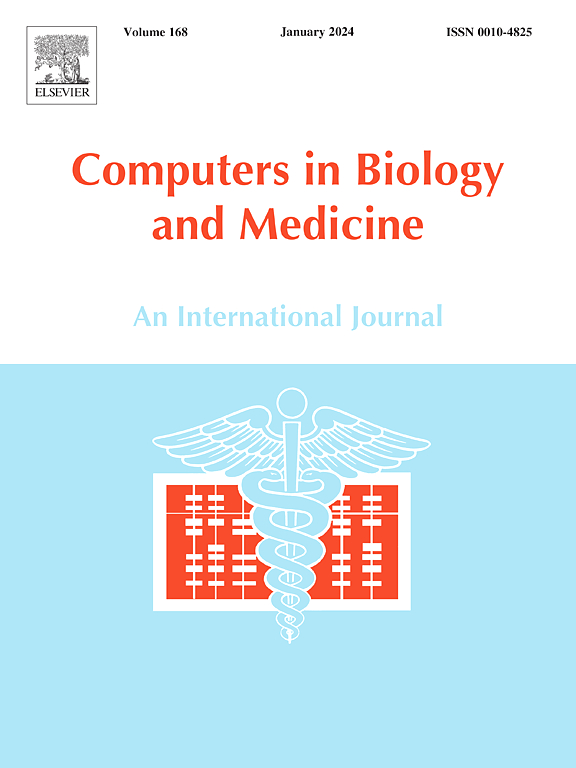一种新的护身符Amplatzer编织模型,用于精确模拟左心房附件闭塞过程
IF 7
2区 医学
Q1 BIOLOGY
引用次数: 0
摘要
心房颤动(AF)是一种改变人体心率的心脏疾病。它正在给社会带来越来越大的负担,其并发症可导致中风和起源于左心耳(LAA)的血栓栓塞引起的缺血性事件。经皮LAA闭塞术(LAAO)由于其微创性,正成为越来越多采用的预防性治疗选择。然而,这种治疗面临着复杂的挑战:LAA形态的异质性限制了术前计划,并且一些手术与位置错误和装置相关血栓引起的装置周围渗漏有关。两种最常用的LAAO设备(laaod)之一是护身符Amplatzer (AA),一种网状的安抚装置。计算机模型已经证明了它们作为临床计划支持工具的潜力,提供了能够提高干预的有效性和安全性的洞察力。大多数的计算研究将AA近似为一个封闭曲面模型。在这项工作中,我们旨在开发一个更真实和详细的AA结构模型,捕捉电线的网格。在物理装置上进行了实验测试,比较了简化的封闭曲面模型和新开发的编织几何模型的性能。结果表明,AA的封闭表面模型无法捕捉物理设备的真实变形机制。相反,更真实的编织特征通过捕捉导线角度的变化,更接近于模拟物理AA的形状变化。最后,将缠绕模型虚拟部署到患者特定的LAA中,导致类似于临床植入的AA的配置。本文章由计算机程序翻译,如有差异,请以英文原文为准。
A new braided model of the Amulet Amplatzer for accurate simulations of left atrial appendage occlusion procedures
Atrial Fibrillation (AF) is a cardiac disease altering the human heart rate. It is posing an increasing burden to society, with complications that lead to stroke and ischemic events from thromboembolisms, originating in the left atrial appendage (LAA). Percutaneous LAA occlusion (LAAO) is becoming an increasingly adopted preventive treatment option due to its minimally invasive nature. However, this treatment faces complex challenges: the heterogeneity of LAA morphologies limits the pre-operative planning and several procedures are associated with peri-device leakage from malposition and device-related thrombi. One of the two most commonly deployed LAAO devices (LAAODs) is the Amulet Amplatzer (AA), a mesh-like pacifier device. In-silico models have demonstrated their potential to serve as supporting tools for clinical planning, providing insight able to enhance the efficacy and safety of the intervention. Most of the computational studies approximate the AA to a closed surface model. In this work, we aimed to develop a more realistic and detailed structural model of the AA, capturing the mesh of wires. Experimental tests on the physical device were conducted to compare the behaviour of simplified closed surface models and the newly developed braided geometry. The results have demonstrated how closed surface models of the AA fail to capture the real deformation mechanism of the physical device. Conversely, the more realistic braided characterisation mimics more closely the changes in shape of the physical AA, by capturing the change in angles of the wires. Finally, the virtual deployment of the intertwined model into a patient-specific LAA resulted in a configuration similar to the clinically implanted AA.
求助全文
通过发布文献求助,成功后即可免费获取论文全文。
去求助
来源期刊

Computers in biology and medicine
工程技术-工程:生物医学
CiteScore
11.70
自引率
10.40%
发文量
1086
审稿时长
74 days
期刊介绍:
Computers in Biology and Medicine is an international forum for sharing groundbreaking advancements in the use of computers in bioscience and medicine. This journal serves as a medium for communicating essential research, instruction, ideas, and information regarding the rapidly evolving field of computer applications in these domains. By encouraging the exchange of knowledge, we aim to facilitate progress and innovation in the utilization of computers in biology and medicine.
 求助内容:
求助内容: 应助结果提醒方式:
应助结果提醒方式:


